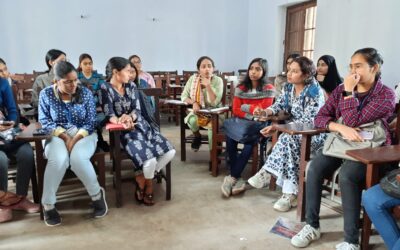“What do you see yourself doing in 10 years from now?”
This is one of the questions that I have asked repeatedly over the last two months, from disabled people I work with. I wonder if I have an answer to it but that’s a story for another day.
Each time, I ask this question, people pause, laugh nervously and usually say something to the effect of “Kabhi socha nahi”, to which, I usually smile back and say, “Abhi thoda soch lo. Phir batao.”
Typically, people would think and fumble for a while before replying. The answers would vary, some of which include,
‘Own a small business’,
‘Buy a house for parents’,
‘Have a family’.
Because of cultural biases and social norms, I had expected more women to say that they would want to be married and have a child. That’s what happened. They also expressed that they’d probably not be working anymore. Fewer men talked about marriage and kids. To probe, I would ask them to imagine that they are already married and who would be their partner. This is when the women would almost always say that they would prefer their husband to also be a person with a disability and that it they will then be able to understand and support each other. Men, on the other hand, had something different to say altogether. They would want to be married to someone who doesn’t have a disability.
We all belong to different social groups, based on gender, sexual orientation, religion, caste, disability, etc. Because of the existing hierarchies within these groups, members enjoy different status among themselves. So, within a group of people with visual impairment, based on their social status, they can have access to different resources, which means that women with disability face double the burden of discrimination and marginalization by virtue of their disability and their gender.
The United Nations report states that:
- The global literacy rate is as low as 3% for all adults with disabilities, and 1% for women with disabilities.
- Although all disabled people face barriers to employment, men with disabilities have been found to be almost twice as likely to be employed as women with disabilities.
- Women and girls with disabilities experience a higher rate of gender-based violence, sexual abuse, neglect, maltreatment and exploitation than women and girls without disabilities.
We are unjust to each beneficiary of every social intervention if we avoid the intersectionality of individuals across social groups. How can the interventions designed for school children work, if we don’t consider gender, puberty and age. For one child, the challenge can be an increased pressure to earn a living for the family, while for the other, it can be because of the onset of menstruation. Recently, one of my co-fellows wrote an article about linear thinking and its pitfalls. To reiterate his point, I’d say that just because a solution is simple, or easy to implement, it doesn’t necessarily mean that it’s the best.




0 Comments